We tried the Philips Viva Centrifugal Juicer, which can do everything expensive juicers can for just £70
The Philips Viva Centrifugal Juicer is probably the best compact budget friendly juicer around
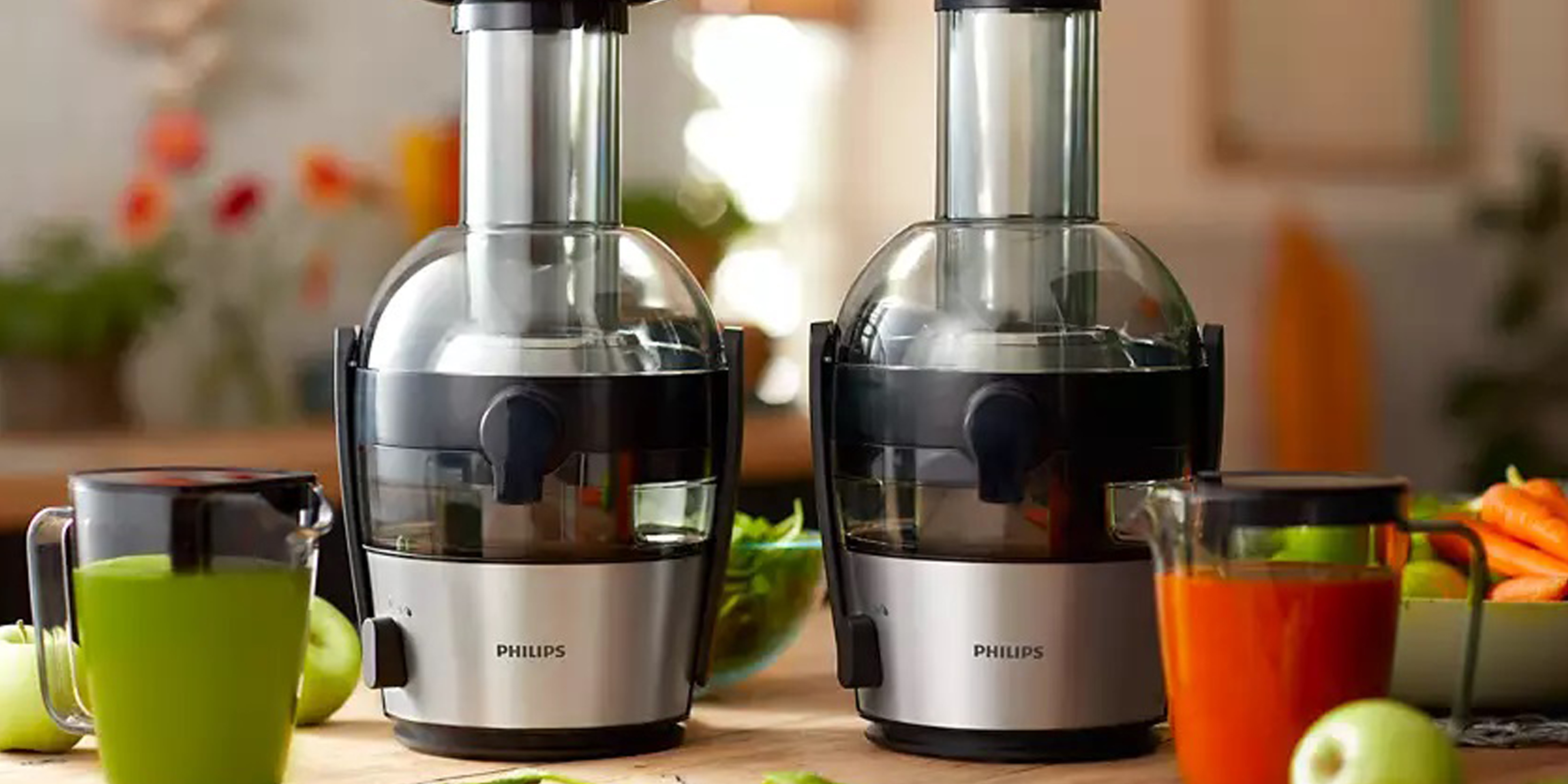
Don’t be fooled by its small stature, this little juicer can outperform some models that are twice the size as well as twice the price. If you can get past the fact it makes quite frothy juice, it’s a great budget friendly model.
-
+
Very compact
-
+
Inexpensive
-
+
Simple to use
-
+
Lightweight
-
+
Good juice yields
-
-
Juice is frothy
-
-
Small capacity pulp container
Why you can trust Ideal Home

Unless you’re big into juicing, it can be hard to justify the high price attached to most juicers, not to mention the fact that they’re usually bulky and heavy to boot. And given that many of the best juicers can run into several hundred pounds, they’re often overkill if you just want to be able to make the occasional juice when you see some fruit on offer at the supermarket.
The Philips Viva centrifugal juicer bucks the trend and offers home juicing in a compact and low-cost juicer. It’s a centrifugal juicer so it works by chopping the fruit or vegetables with sharp spinning blades, before straining through a fine spinning sieve to extract the juice.
I used this juicer at home for a week and at under £80, not only is it one of the cheapest juicers I’ve reviewed, it’s also one of the smallest, so I didn’t have high hopes that it would perform well. But I must admit I was surprised by what it’s capable of.
Phillips Viva product specs
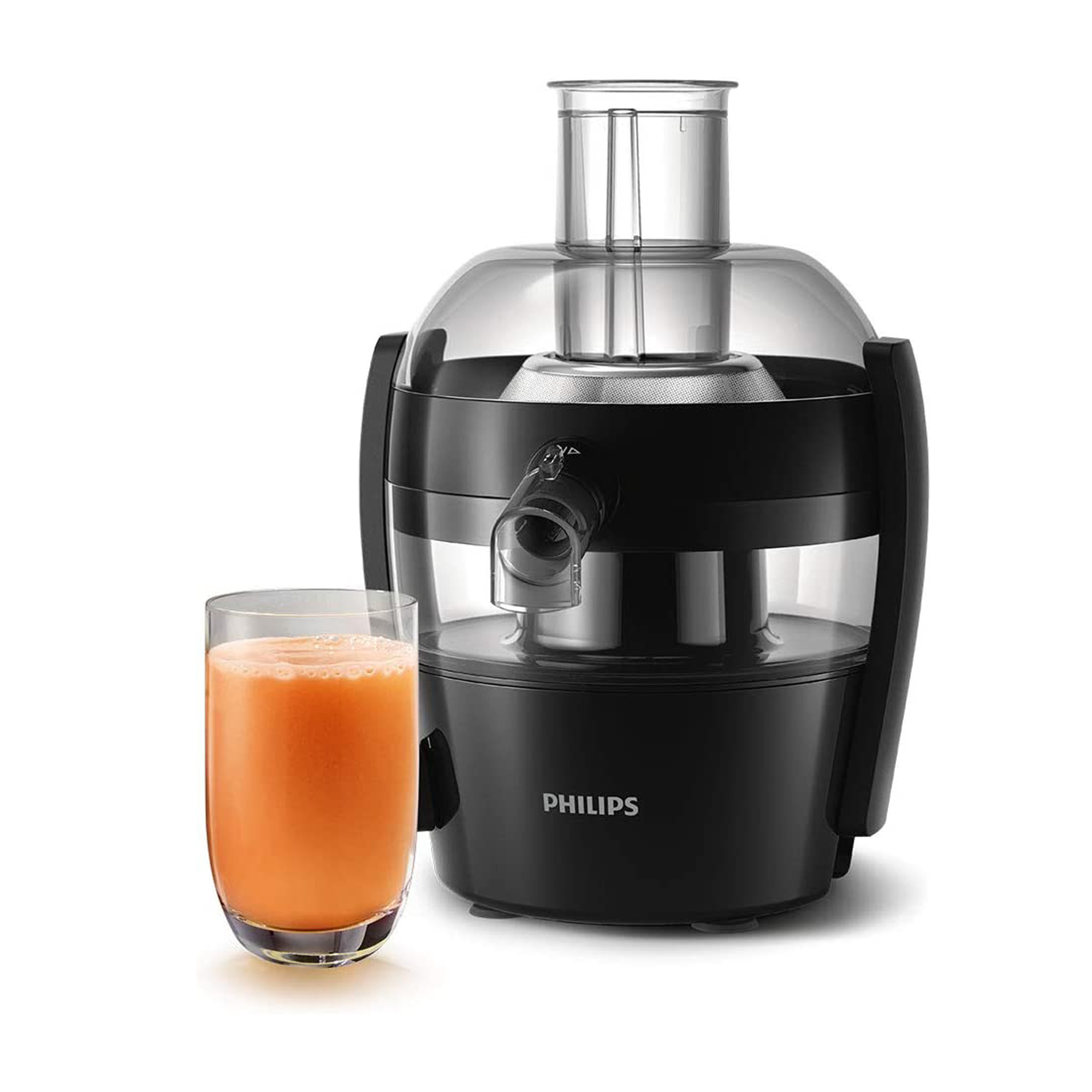
- Centrifugal or Masticating: Centrifugal
- Material: Plastic
- Capacity: 0.5 litre juice container, 1 litre pulp container
- Feeding tube: 55mm
- Power: 500 Watts
- Weight: 2kg
- Dishwasher safe: Yes
Who reviewed this juicer

After completing a Home Economics degree, Helen went on to work for the Good Housekeeping Institute and has been reviewing home appliances ever since. She lives in a small village in Buckinghamshire in the UK and was allowed to keep this Philips Viva centrifugal juicer after the review.
Unboxing the Phillips Viva juicer
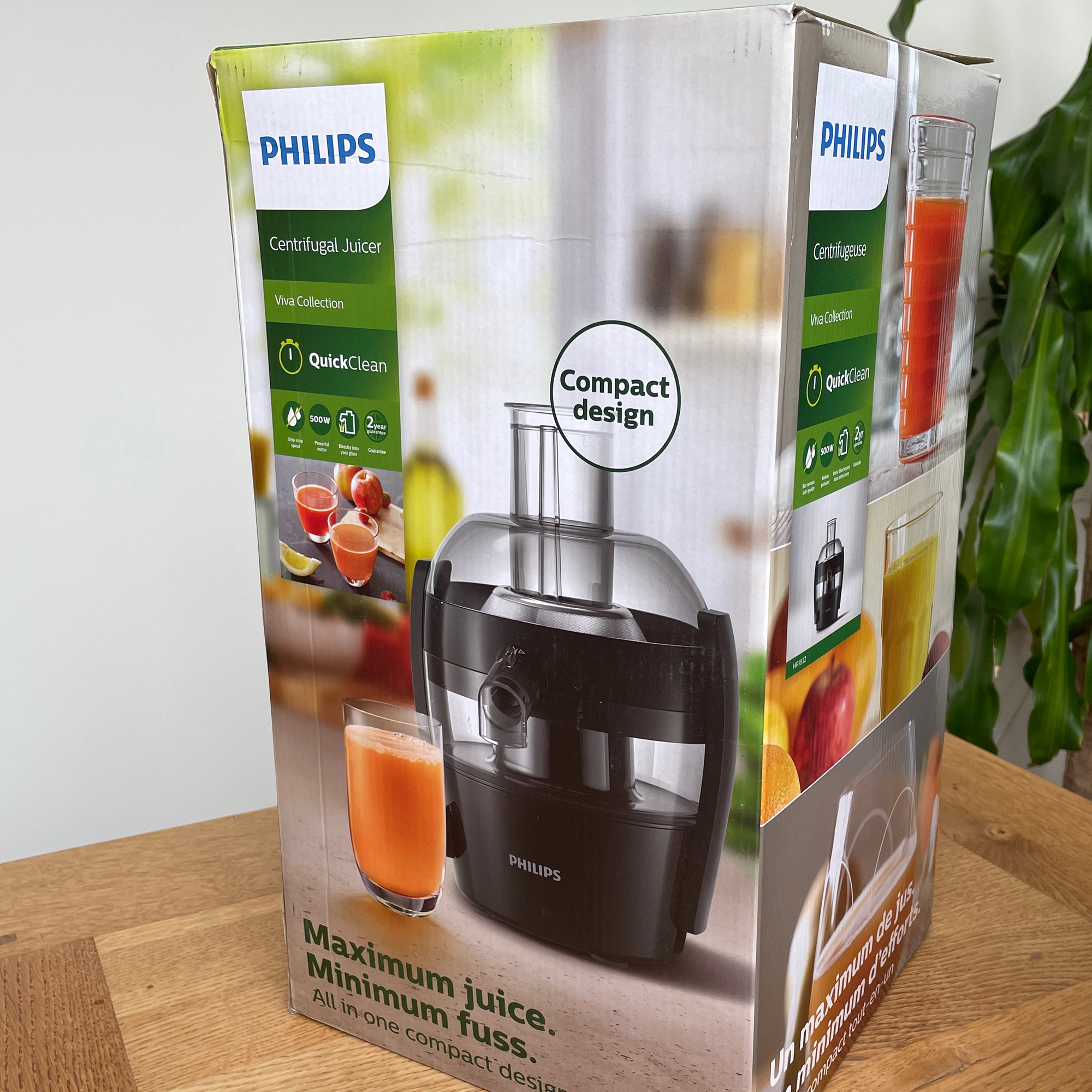
As I pulled this juicer from its small box I was happy that I didn’t encounter any chunky plastic or polystyrene packaging. Like most appliances these days, it’s protected instead by easily recyclable cardboard inserts, though there are some plastic bags to dispose of.
This petite juicer is barely bigger than a kettle and is probably one of the smallest I’ve seen. The only extra in the box is a 500ml juice cup. There’s no pulp container because it’s designed to keep the pulp inside, making it neater on your worktop.
It’s got suction cups on the feet to keep it rooted to the worktop and the juice spout can be angled upwards at the end of juicing to stop those annoying drips creating a sticky mess on your surfaces. Though I immediately spot the small feed chute, which means I won’t be able to throw whole apples in, so the knife and chopping board will be coming out before juicing bigger fruits and vegetables.
First impressions
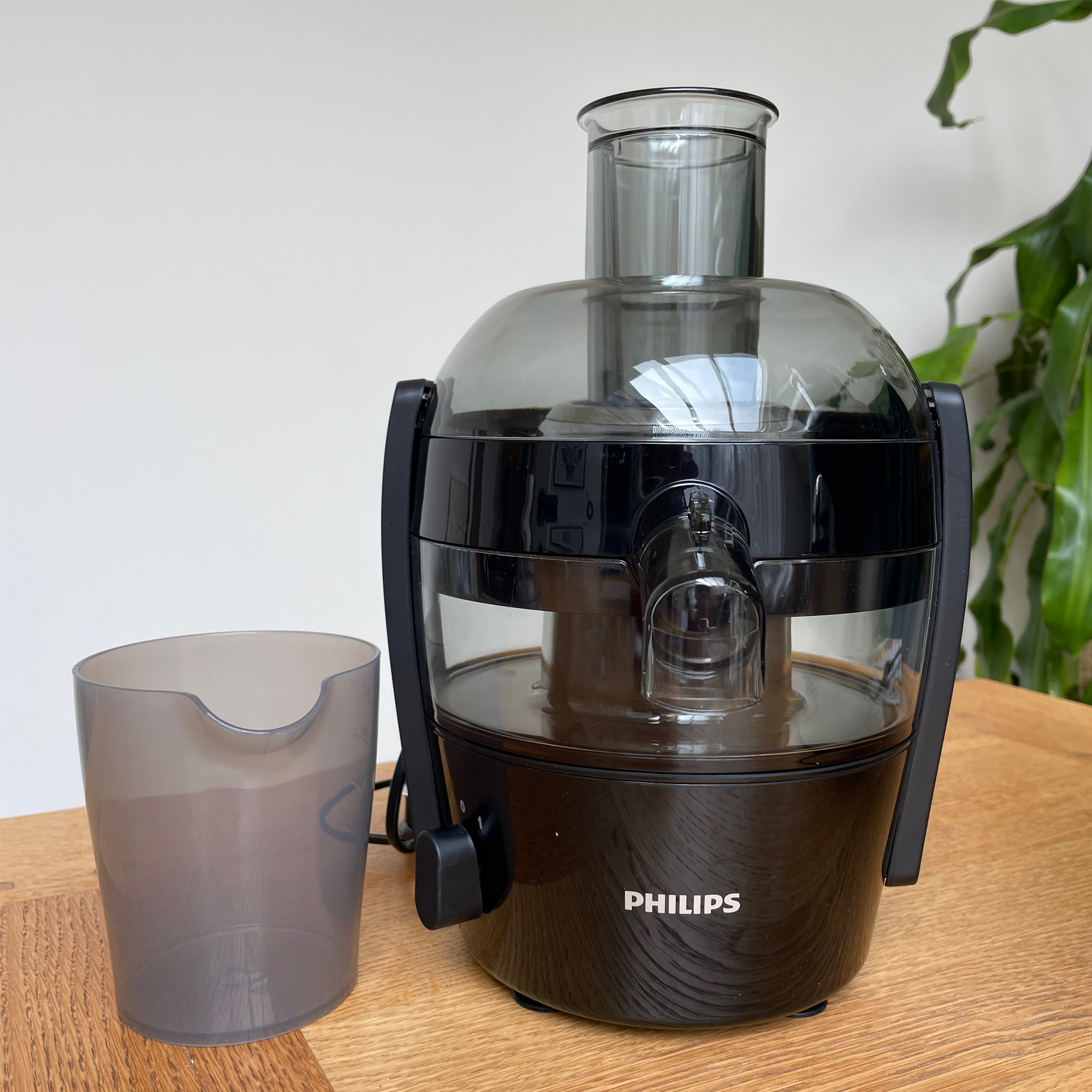
The two big side clips lock all the parts together, though I find them a bit clunky to get open. Once opened up though it disassembles simply by lifting out each of the pieces and goes back together just as easily. I’m intrigued to see what it’s like in use, because it’s quite lightweight so I’m concerned about it wobbling around while juicing tough and hard foods.
In terms of looks, it’s not a high-end appliance, but its rounded shape and compact size mean it’s kind of cute, if a little plasticky. It comes with a small plastic juice cup, but the spout is nicely positioned to allow space for a glass below it, so you can save on the washing up and juice directly into your glass.
With just one speed to worry about, this little juicer is certainly uncomplicated. Which is lucky, because to say the instructions are lacking would be a bit of an understatement. They consist of one sheet of A4 paper that’s entirely images. And while it does illustrate how to assemble, disassemble, and clean the juicer, there’s absolutely no help regarding what you can or can’t juice, or any handy juicing tips to help you get the best out of it.
Making apple juice
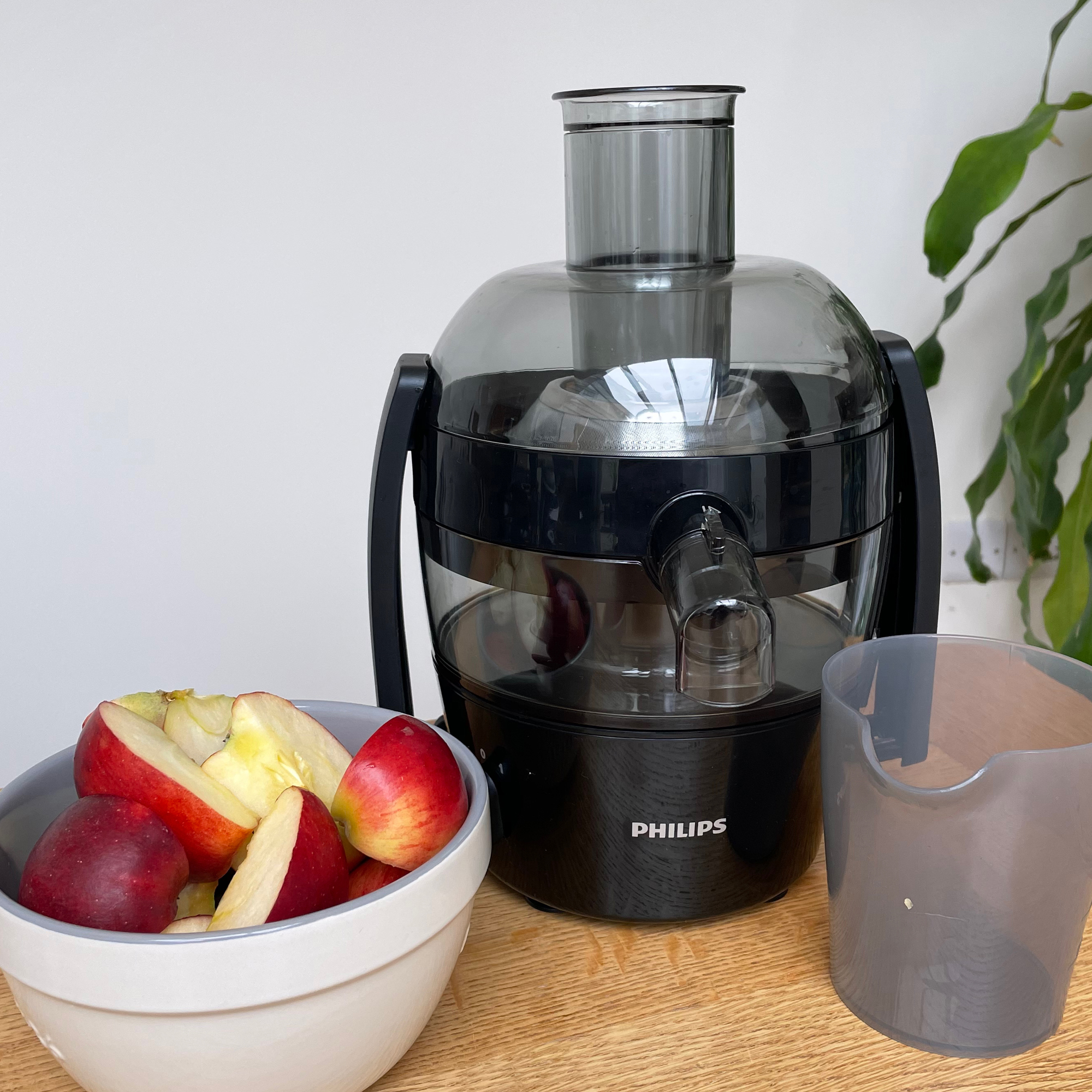
To whizz up a glass of fresh apple juice, I had to chop my four red apples into quarters so they’d fit down the feed chute. It was a fairly speedy process, taking just one minute to get through all the apple pieces. I had to insert the pusher and apply some pressure to each piece but that didn’t slow things down too much.
Having weighed the apples before juicing as well as the juice, I can tell you that 71% of the apples made it into the glass. In my experience anything above 70% is pretty good, so it’s not a bad yield at all.
The juice had a good 1cm of foam on the top, this didn’t surprise me as it’s common for centrifugal juicers to make frothy, aerated drinks. But, despite having a cloudy appearance, below the froth it had a surprisingly smooth and clear texture and was very pleasant to drink.
At 82dB it was as noisy as a blender, which is typical for a centrifugal juicer, and in my opinion it’s not too offensive for just one minute. And I was pleased to note that it stayed put in the worktop and didn’t wobble around at all.
Making orange juice
I peeled four oranges and halved them so they’d fit into the chute. After I put each half in, I had to quickly insert the pusher as the fast spin speed means there’s a danger of bits of orange and juice flying out if you don’t.
It got quite loud, hitting 85dB on my noise meter, but it was fast and juiced four large oranges in just over 30 seconds.
The juice was very aerated throughout with a layer of foam on top, but it was smoother than I expected, with very little in the way of pulp or bits having made their way into the drink. And the juice yield was 67% which is amongst some of the best yields I’ve achieved from juicers I’ve recently reviewed. So if you can get past the foam, it’s a good result.
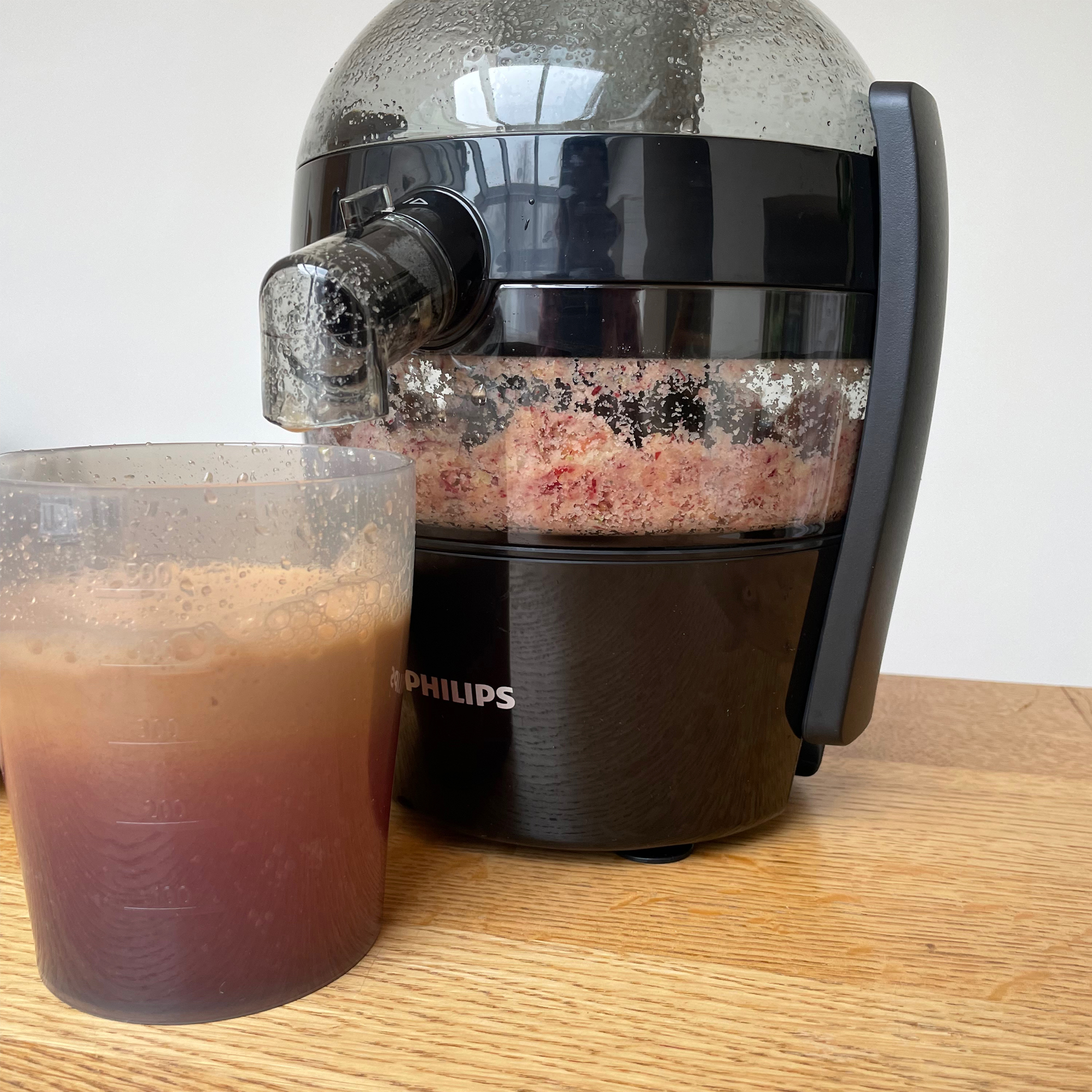
Making a vegetable juice
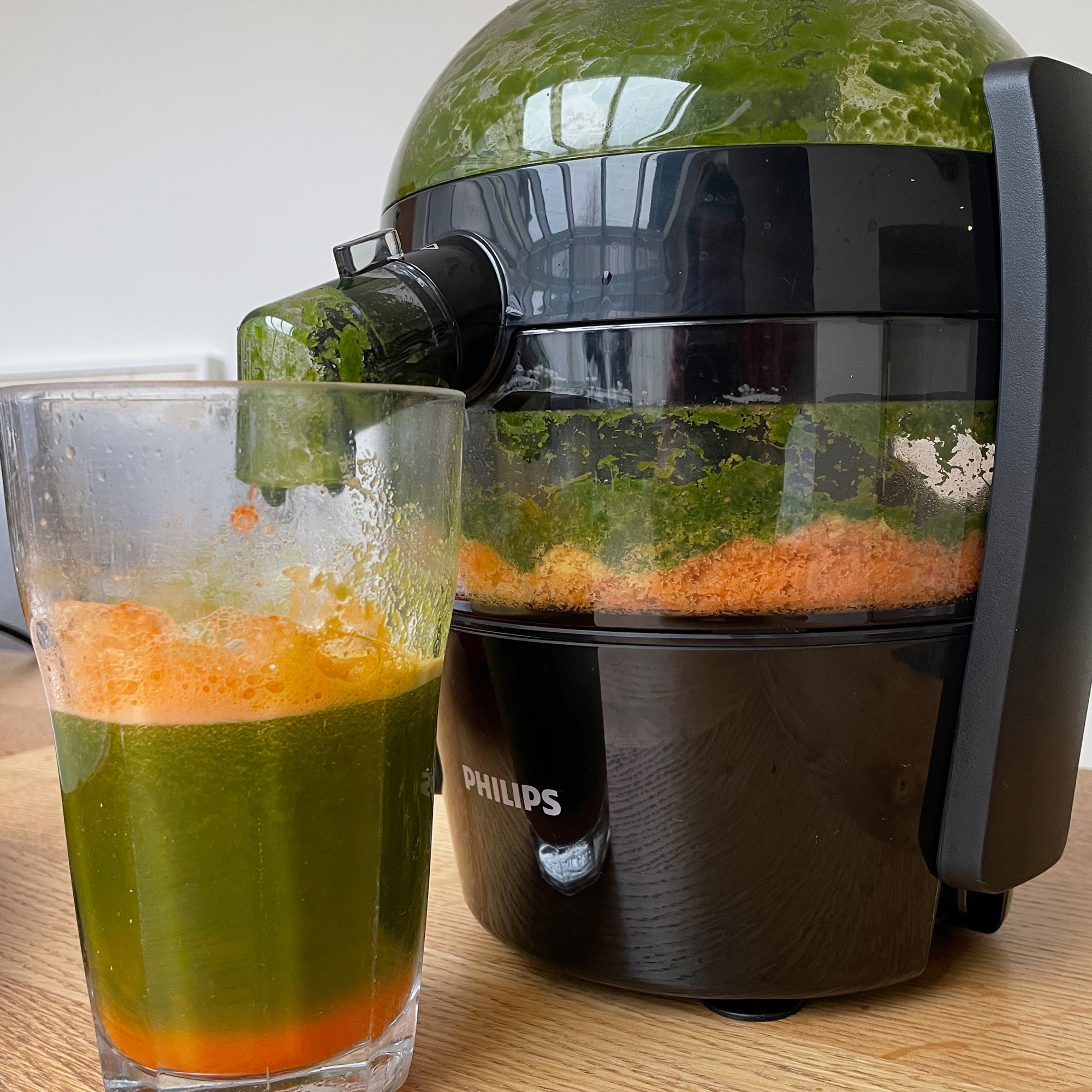
Vegetable juices are a great way to enjoy juice without worrying so much about the high sugar levels. So I made a celery, carrot, ginger, and spinach juice. I opted to leave the celery sticks whole and only topped and tailed the carrot, and I sliced the ginger into a couple of thick slices.
It juiced the lot in under a minute, straight into my glass, and there wasn’t too much froth on top. Though the juice did need to be mixed with a spoon, because it had a clear carrot layer at the bottom of the glass and a green spinach layer near the top.
The juice had a thick pulpy texture, but it wasn’t powdery or gritty like I’ve tasted from other juicers. The yield was a very impressive 63% which is one of the best yields I’ve seen for this juice. Though this will be partly because of the amount of pulp in the drink which pushes up the volume extracted.
Juicing raspberries
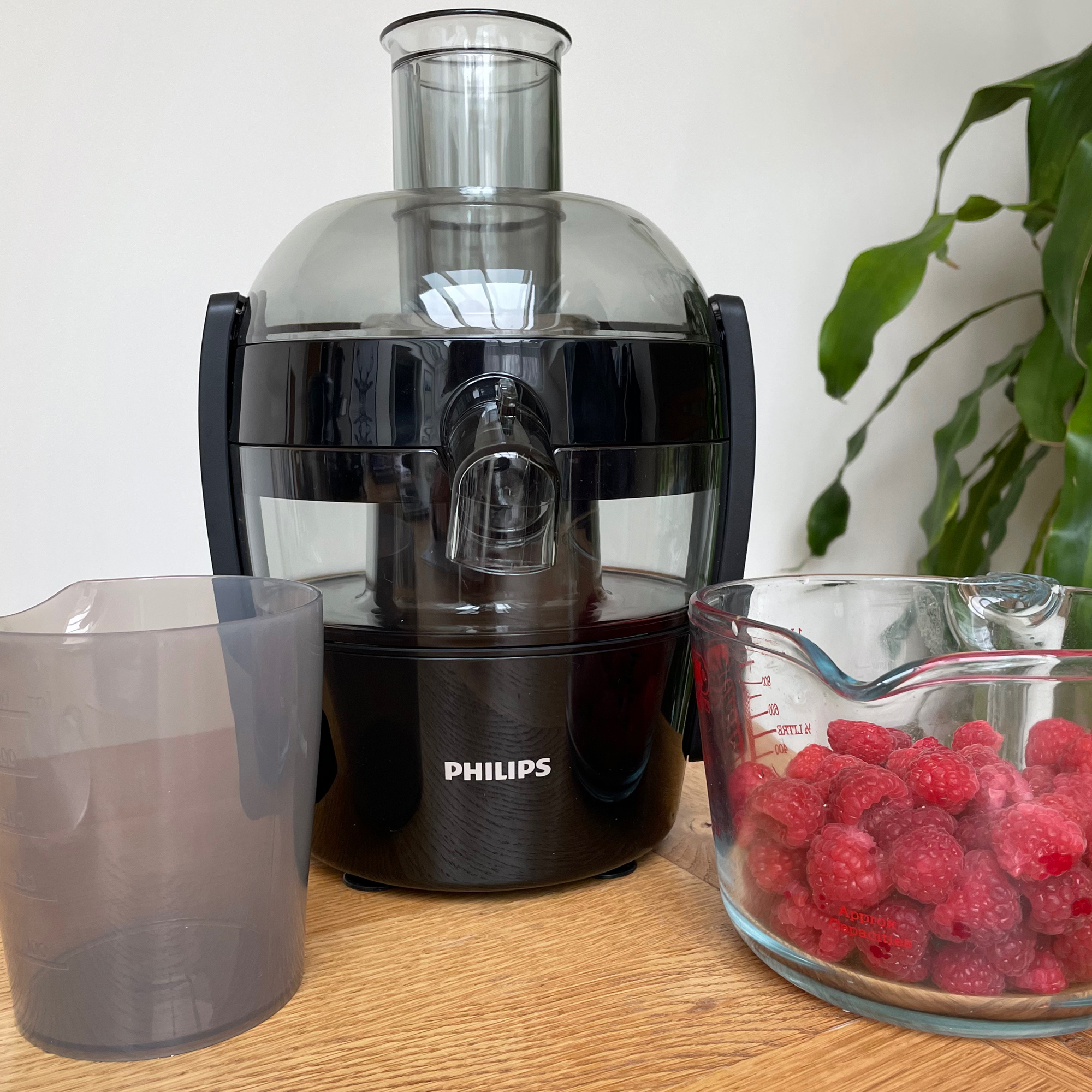
Since there’s no advice on whether it can cope with berries, I decided to just give it a go and poured in a whole 300g pack of raspberries. I had to keep inserting the pusher to stop bits flying back out of the top
It took about a minute to juice its way through all the raspberries, but I left it running for a further 30 seconds until the juice stopped pouring out. It managed to extract a juice yield of 53%, which is far from the best I’ve seen for raspberries but nowhere near the worst either. The vibrant pulpy raspberry puree was thick and smooth with not one seed.
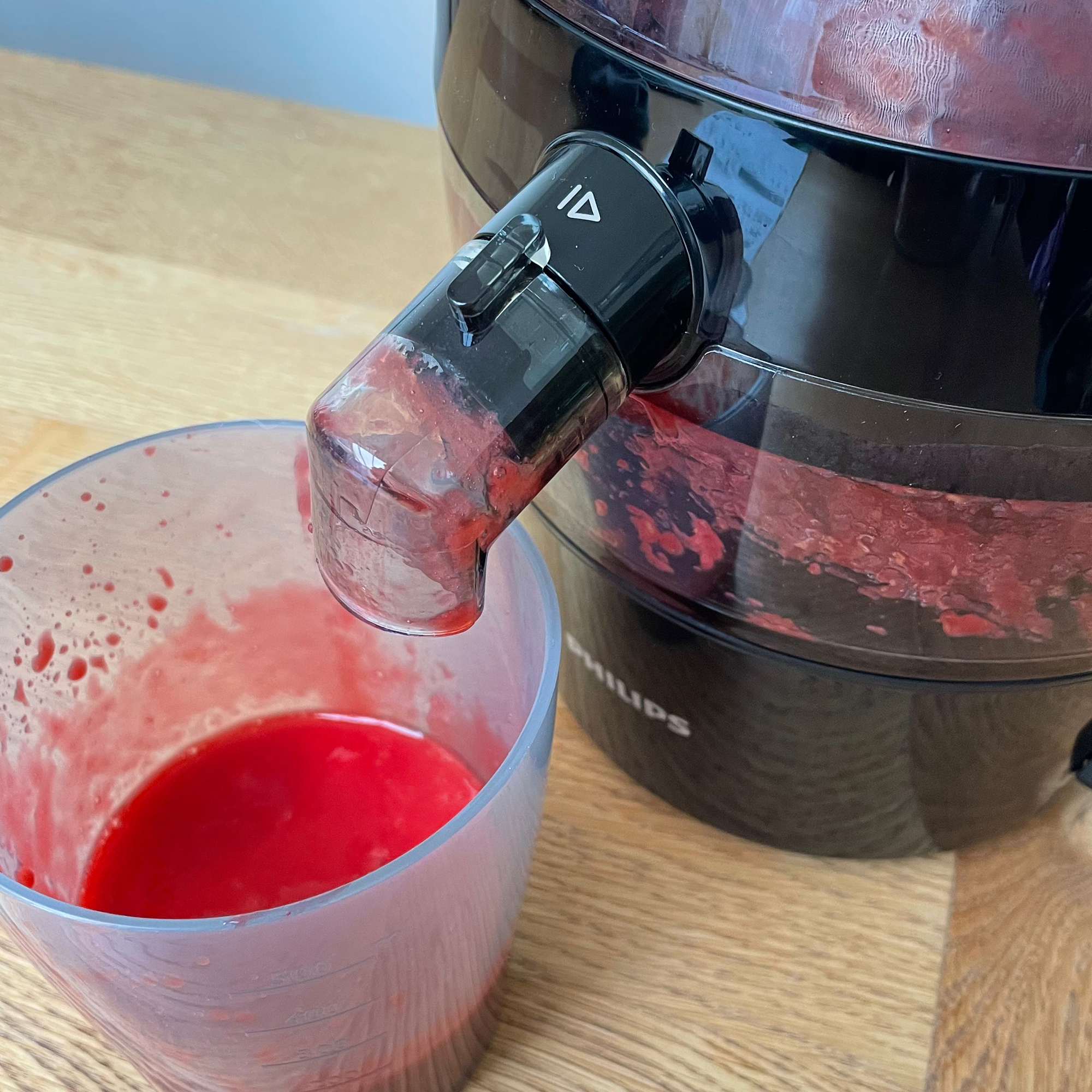
Cleaning
Because it’s so small, cleaning isn’t too much of a drama, you can easily rinse it all under the hot tap to get rid of most of the juice and fruit residues. Or, if you prefer it can all go in the dishwasher. And thankfully, it doesn’t take over most of the dishwasher like some of the larger juicers.
It doesn’t come with a cleaning brush, which isn’t surprising at this price point. But a brush is the easiest way to clean the filter mesh, so you’ll need to pick up a washing up brush if you don’t already have one. And my dishwasher didn’t clean the filter well, so I’d suggest cleaning this by hand even if you decide to stick everything else in the dishwasher.
The sparse instructions do suggest pouring water through it at the end of juicing to help flush it out before cleaning. When I did it, some water sprayed back at me as I poured it in, but it was only a fine mist and it worked well to clean and flush through the debris. But remember to put a different container under the spout first or you’ll have very watered-down juice.
Comparisons
Another budget juicer we love is the Nutribullet Juicer, it’s slightly more expensive than this Philips model and it’s also bulkier. But it’s still under £100 and for the extra money it offers two juicing speeds, a larger juice jug with built in froth separator and a larger pulp container.
Or, if you don’t mind paying more, you’ll get really excellent results from the Magimix Juice Expert 3. This is probably my favourite juicer. It produces high yields, so there’s less waste and it even comes with a citrus press attachment. Its footprint on the worktop is only marginally bigger but overall it’s much bulkier and heavier than the Philips. Plus, the steep £250 price tag will put it out of reach for some.
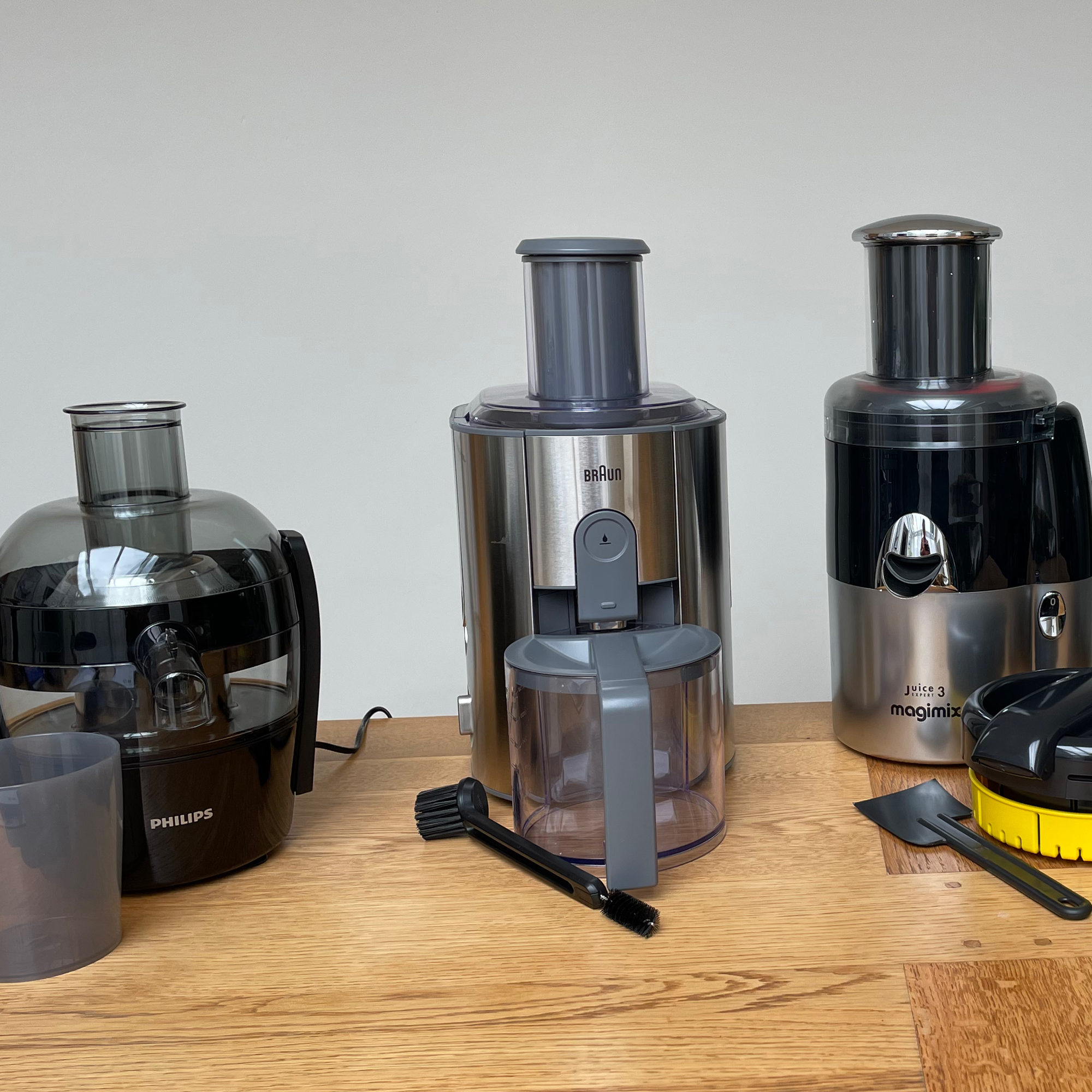
Should you buy the Philips Viva Centrifugal Juicer?
I’d say the two biggest reasons to buy this juicer are size and price. If you’re pushed for space and you want a compact juicer that doesn’t engulf your storage space but is also lightweight and easy to lift in and out of a cupboard, this one will tick your boxes. Similarly, if your budget is tight, it’s a fantastic price.
The downside is that it makes very frothy, foamy juice. Aside from that though, it’s not too wasteful and juice yields are impressive. So if you’re on the hunt for a decent budget juicer, this one really does represent great value for money.
About this review, and the reviewer:
Helen reviewed this juicer alongside three others for Ideal Home, so she could make informed comparisons on speed of juicing as well as juice yields and ease of use. She’s consumed more than her fair share of juice for this review, but don’t worry, she made sure she supplemented the juice diet with plenty of pasta and cheese to keep things in balance!
Get the Ideal Home Newsletter
Sign up to our newsletter for style and decor inspiration, house makeovers, project advice and more.

After completing a Home Economics degree, Helen went on to work for the Good Housekeeping Institute and has been reviewing home appliances ever since. She lives in a small village in Buckinghamshire in the UK, where she reviews all sorts of home and garden appliances for Ideal Home using her wealth of experience.
-
 This £200 limited-time discount makes this Dyson vacuum cheaper than I’ve ever seen it - run don’t walk to Argos for this bargain
This £200 limited-time discount makes this Dyson vacuum cheaper than I’ve ever seen it - run don’t walk to Argos for this bargainIt's the most affordable Dyson on the market right now
By Lauren Bradbury
-
 Martin and Shirlie Kemp’s pastel flower beds have given their Victorian renovation a romantic look - how you can get the look
Martin and Shirlie Kemp’s pastel flower beds have given their Victorian renovation a romantic look - how you can get the lookTheir pastel garden is the cottage garden inspo you've been looking for
By Kezia Reynolds
-
 IKEA has just launched a massive 96 new products - but these are the only pieces you need to pay attention to
IKEA has just launched a massive 96 new products - but these are the only pieces you need to pay attention toThe classic STOCKHOLM collection just got even better
By Kezia Reynolds